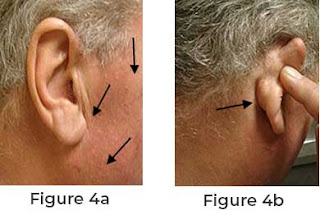Parotidectomy and Facelift: The Interesting Perspective

Parotidectomy and facelift One treatment option we offer to patients with benign parotid tumors is a parotidectomy through a facelift incision. This alternative method effectively eliminates the tumor while preserving the facial nerve and providing an ideal cosmetic result without any additional risks. A parotidectomy with a facelift incision is a procedure that removes the parotid glands: • Patients who have a parotidectomy frequently notice a difference in their appearance as a result of the type of incision and reconstructive procedure used. • A facelift incision parotidectomy is a thorough procedure that combines the skills of our head and neck and plastic surgeons to safely remove parotid gland tumors with minimal scarring. • Your surgeon will execute a facelift incision that continues behind the ear rather than down into the neck, resulting in a more concealed incision. Dermal fat grafts (fat extracted from the abdomen or a muscle flap) are used to recreate the symmetry of ...
